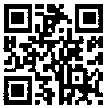MARY FALLON
November 27, 2009Pathways involved with language. Photo: Sydney Morning Herald
IT'S an excellent party trick: un, two, trois, four, cinq, six, sept … counting while switching languages. It has also been the subject of plenty of serious research in the past decade - how the bilingual brain stores multiple languages, and retrieves the information without confusing cross-talk.
Hundreds of hi-tech scanning experiments have located brain activity associated with language use. For example, bilinguals use larger and different areas of the brain when switching between languages, and different areas of the brain are activated depending on the age a second language is acquired.
Exactly how two or more languages are wired in the brain is not yet fully understood. But current brain research can answer many questions about the role of bilingualism in education - particularly for Australia's indigenous communities, which are among our most linguistically diverse.
Laura-Ann Petitto is a senior scientist in language, bilingualism and childhood development at the University of Toronto.
She directed a study that showed monolingual and bilingual people had similar brain activity in the classic language regions of the brain - the left Broca's area and the left prefrontal cortex (PFC) - when speaking in one language.
However, when bilinguals switched rapidly between two languages, brain activity increased in both the left and right Broca's area and the right PFC. "Bilinguals appear to engage more of the neural landscape available for language processing than monolinguals, which is a very good thing," says Professor Petitto.
It is good because the brain has an amazing ability to restructure itself according to experience and learning.
"One of the major benefits of learning a second language is the straight brain power, the cognitive power, that arises," says Sydney University's Brain & Mind Research Institute director, Ian Hickie. "You end up with better overall brain function as a consequence of the challenge of learning an additional language in those early preschool to primary school years."
Not only does brain power increase in bilinguals, but those who learn a second language at a younger age are more likely to have more advanced grey matter than those who learn later.
"Childhood is most suited to acquiring language, because there is an open system for learning in the brain," says Professor Hickie.
"When you are young, the brain is forming millions of new connections every minute of every day. How you organise information cognitively is quite different to later periods of development."
While earlier is better for language learning, can it detract from learning other things?
Key experiments in which people were required to learn an invented language revealed those who were bilingual mastered twice the number of words than the single language participants.
"All of the scientific evidence points to a bilingual advantage, rather then disadvantage," says Professor Matthew Finkbeiner, neurocognitive psychologist at the Institute for Human Cognition and Brain Sciences at Macquarie University. ''Learning a second language does not confuse children. This is an extremely unfortunate, albeit widely held, belief."


No comments:
Post a Comment
By all means leave your comments - please do not be offensive, abusive, or rude. We ask you to sign your comment as well, please.